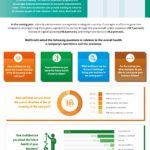By Summer Suleiman, Editor
The Distillery, March 2017 —

Sevetri Wilson, founder/CEO of Solid Ground Innovations and ExemptMeNow.
When Sevetri Wilson and her engineering team launched ExemptMeNow in November 2016, there were no champagne bottles popped, no extravagant launch parties, or fancy dinners to celebrate.
The team was flat out exhausted.
They had spent the past five months building an extensive and exhaustive software platform that streamlines the entire technical process of incorporating a nonprofit, across fifty states.
ExemptMeNow, which was initially a service provided to clients of Solid Ground Innovations (SGI), the strategic communications and management firm Wilson started in 2011, had evolved into its own product.
After careful consideration, Wilson decided to spin out the product and create ExemptMeNow as a second company, before beginning research and design in the summer of 2016.
And after finally launching ExemptMeNow, there was no slowing down for Wilson. She rounded out the year by leading a campaign to elect Sharon Broome, the first female, African-American mayor of Baton Rouge, Louisiana, a client of SGI.
SGI, which is anchored in Baton Rouge and New Orleans, is on a clear path for growth and has now established a presence in Washington D.C.
Now, it’s time to shift her focus to crystallizing and growing ExemptMeNow, Wilson says.
Long days have her on the road back and forth between Baton Rouge and her home base, New Orleans. The woman’s got stamina.
Long before today’s popular social and political issues had large corporations flocking to attach their brands to women and minorities, Wilson had championed these groups of business owners. Late last year, she was invited to be a part of the White House’s United State of Women Summit. Here at home, she’s a booming voice on why minorities need a seat at the table.
We like to call her a triple threat around here–a young, black, female entrepreneur.
She’s defying the odds every single day in a field where only .4% of African-American women raise significant funding for tech startups.
So what’s next for 31-year-old, two-time entrepreneur and Louisiana native?
We caught up to her speed recently on a Saturday night in New Orleans to find out why the road to launching ExemptMeNow was long and daunting, and why it’s going to take serious strategy to change those staggering statistics.
Last year when we spoke about ExemptMeNow, you were just beginning to explore the idea of evolving into a separate company. Take me through what the last year has been like.
At the end of last year, I was at a cross roads and I knew what I needed to do, but I didn’t know how to do it, and to really take ExemptMeNow to the next level. How do you co-exist between two companies with one company taking off, I asked myself?
But for me, I saw an opportunity with ExemptMeNow that I didn’t think I should pass. As things become clearer for SGI, things are still a little murky for ExemptMeNow. We want to be a high-growth, SAAS model.
And so much of this process has been trying to repurpose or rethink how I approach situations. With SGI, I didn’t have to raise money. It was just me growing a company and reinvesting what I was making.
With ExemptMeNow, I have to ask people for money, I have to pitch to people. I have to intake a lot of criticism, a lot of setbacks. In all honesty, I’m a little bit out of my comfort zone. That has been a very humbling process.
Where are you in the process now?
We are currently raising $1M for ExemptMeNow. We’ve gone through 30 Day Due Diligence. We’ve infused $400,000 into ExemptMeNow to date. We’ve raised $255,000 in investor capital, and put in $200,000 of our own capital.
Fundraising has been a very humbling process for me. It reminds me of a quote from Hidden Figures:
“Every time you make it to the end, they move the finish line. That’s what fundraising has been like.”
We are currently a fellow in PowerMoves.NOLA and The Idea Village’s CAPITALx program.
We just launched a 30-Day raise for $300,000. We’re going to send out a memo to anyone who’s ever been interested in investing in ExemptMeNow. We have various contracts on the table, some substantial opportunities, but we really need to develop faster and we need to increase our burn rate.
We’re bringing in revenue of about $15,000 a month and basically just re-investing it. We need growth capital. We have our B2C product (think of this as a one-stop-shop for new non-profits) and our B2C product-compliant software for non-profits that already exist. Our growth capital will allow us to be focused on our B2C model. What we launched to date is B2C but what we’re getting the most traction on is our B2B product.
We built a system that sends you alerts if there are any changes to state or federal laws that might impact your organization, ie. annual reports, 990’s, a data house for any documents that you need. One of the functions that’s coming out in a month is a user add on, similar to Basecamp, that allows you to add on any team members or board members.
Can you break it down for me in layman terms?
ExemptMeNow is like the TurboTax for non-profits. The IRS says the process of incorporating a nonprofit takes 101 hours. We’ve reduced that process to 10 hours, but really 3 hours if you sit down and do it all the way through.
Tell me about how ExemptMeNow was conceived.
The idea was born in 2014. We had to decide if we wanted to phase out a service that we were already providing to our SGI clients. We used to do this service manually, and it no longer fit our model. So we decided that we needed to either get rid of it, or evolve it.
Anthony, our marketing director at the time, connected me with his friend, Ishmael who is an engineer in San Francisco.
We flew out to San Francisco for three days and basically I did a brain dump with Ishmael. He then created a 40-page specifications deck, which was essentially the blueprint for what we were trying to do. I sat on it for three months.
Let’s talk about development and launching.
Development was very intense. We developed a hard-core software created from scratch. It was a lot of research, consulting and mapping out.
We started UX/UI in July 2015 and engineering/development in December 2015. Even our very saavy, seasoned engineers were like, this is A LOT. We were literally breaking apart different paperwork and filings across fifty states. There were so many files!
We did a beta launch in September 2016, and we did our full public launch in November 2016 across all fifty states.
“The whole development team is from Louisiana now, and the investor team. I wanted a Louisiana team – 100% homemade.”
We’ve averaged $15,000 a month since our November launch. Investors really like our enterprise model because we can sell in bulk. Now we have so much opportunity that we don’t have the capacity for. And that’s why we have to raise the growth capital.
What are the challenges now?
Being able to capture opportunity. I simply don’t have the capacity to capture it. That’s the most frustrating thing now, to know where your clients are and not be able to get to them.
Can we go back to the beginning of when you first started SGI?
I started SGI in 2009. We started as a nonprofit management and consulting firm. By 2012, we started moving into strategic communication and management and that was through bringing on private clients.
When I started SGI, I was working for Louisiana CASA, Court Appointed Special Advocates. I was working there full-time and had the opportunity to take on my first client working as a consultant. I launched SGI to the public in 2011.
Did you always have plans to be an entrepreneur?
No, I was an undergraduate Communications major and history minor at Louisiana State University. When I graduated, I wanted to be a professor.
In 2009, I was in grad school pursuing my Masters and PhD in History at LSU. I finished my Masters but decided to leave the program before finishing my PhD to focus on SGI.
When I started in 2009-2010, I was growing at a rate and I needed to hire people. Now, we have nine full-time people on our SGI team.
SGI has completely grown in a different direction. Some of our clients include Aetna Better Health, CC’s, and City of Baton Rouge. We’re now a full strategic communications and management firm and we’re moving more into the public sector. Now we have a huge expanding into the federal space. I’m very passionate about public policy. For me, it’s about diversifying revenue.
What advice would you give to 21-year-old Sevetri?
Stay lean as long as you can.
Make sure you actually love your idea. Make sure it’s something you’re committed to.
Last year you shared your story with us about your experience facing triple odds-African-American, a woman, and a young entrepreneur. Can we talk more about that?
I think that often times people don’t even realize that it exists.
I’m certain you’ve experienced it countless times. Can you share a particular experience with us?
Yes, a couple of years ago, we went after a National Parks Service RFP (request for proposal). They wanted to increase the number of African-Americans that visited the parks. We submitted what we believed was a very strong and competitive proposal. It was awarded to a white male in Boston. How does that make sense?
What did you learn and takeaway from that experience?
We have to go beyond the surface. We have to strategize better. Talent and ability was not enough. How do we go beyond the surface? We realized we had to network harder and make connections.
A lot of times I tell minority entrepreneurs who think they’re not smart enough, or fast enough, that it’s not the case. Rather, truly it’s because they’re just not at the table. There are factors that are out of their control. We lose out on opportunities because we don’t even know they exist. Too often, I’ve been the only African-American at economic development tables.
Only .4% of African-American women raise $1M or more for tech startups. The numbers are so low, it’s almost non-existent. When you have numbers like that out there, it makes you think, why would an investor who is already taking a huge risk by investing in a startup, take an even larger risk and invest with rates like that?
“You have to turn over every rock. You have to demand to be at the table. You’re more equipped when you know your disadvantages. When you know what’s up against you, it better prepares you. You take losses in stride until you get your breakthrough.”
*Editor’s Note: Sevetri Wilson is a regular contributor at Entrepreneur Magazine and Inc. Magazine. You can follow her on Twitter @sevetriwilson.












